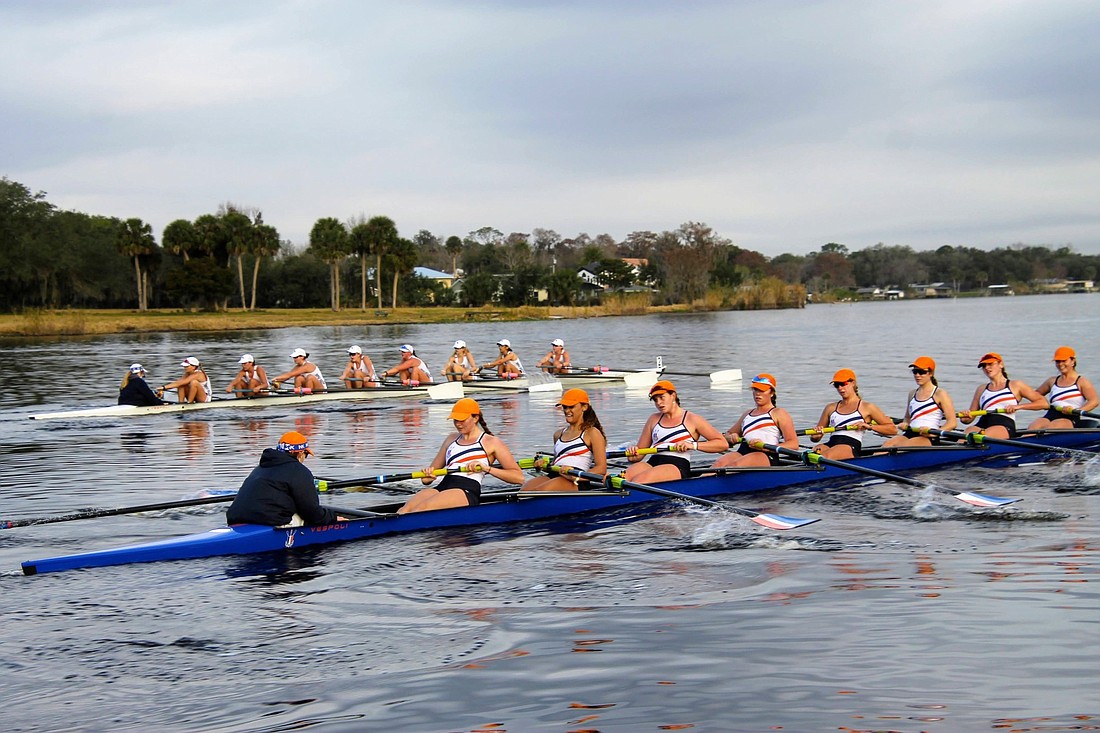- February 16, 2025
-
-
Loading

After nearly a year of patience and changing how the organization operated, the Orlando Area Rowing Society and its athletes finally got the chance to participate in their first real regatta at the American Youth Cup Feb. 20-21 in Sarasota.
The team did have a small, three-team scrimmage in early February, but this event — which featured 25 teams — was the first huge race these athletes had run since the pandemic began. To be there, after everything that has happened, was incredible, said Kirsten Anderson — OARS’ longtime rowing coach and director of rowing.
“Everybody loved it — from the kids to the parents,” Anderson said. “It wasn’t even about where they were placing at all — we did decent — but it really wasn’t about that. It was all about getting out on the race course with other teams from around Florida and around the country.
“It was just fantastic to be at a regatta, back on the water and seeing six or seven boats lined up ready to race,” she said.
While OARS athletes were just happy be be back, they also racked up strong performances in just about every event. On the women’s side, OARS picked up two first-place finishes, four second-place wins and three third-place wins. Meanwhile, on the men’s side, OARS picked up five top-five finishes.
Being able to put up those kind of performances is impressive considering the curveballs 2020 threw. Last summer, the organization was not able to do a lot of the things it normally does, but it did get some new boats and figured out ways of dealing with the situation, Anderson said.
“We were trying to entertain the kids the best we could with Zoom workouts and things like that, and it was OK — it wasn’t anything fantastic,” Anderson said. “But in the summer, we were able to purchase some smaller boats — some singles and doubles. We’re used to rowing in eights most of the time, where you have eight people in a boat, but in a single or double it would allow kids to just hop in by themselves. That allowed us to start offering some lessons and camps to our current rowers.”
Once schools opened in the fall, Anderson said the organization was hesitant to open given the possibility in a rise of cases. To help keep folks safe, athletes were put into small training pods. Boys and girls were split into two groups — with one going to train one day, and the other the next.
The training stayed that way until October, before things began to open up a little bit. By the end of November, things had mostly gotten back to normal — although the athletes still worked in pods, they added bigger boats back into the mix. With all the modifications, it’s no surprise many athletes were rusty at the American Youth Cup — even the coaches.
“Just among the coaches ourselves, people were going around asking, ‘Do you have (this)?’ — some piece of equipment that they forgot,” Anderson said. “Like, we all forgot how to load our trailers. … I was with five coaches who were just talking and they said, ‘This guy forgot his wrenches, this guy forgot something for the trailer.’ That piece was kind of funny … we all were just trying to figure out how to get back to normal.”
OARS athletes and coaches will have some time to try and shake that rust off as they prepare for their next big regatta — the USRowing Youth National Championships in June.